#pacific islander
Text
happy aapi heritage month, loving and friendly reminders
stop erasing pacific islanders or i'll rip out ur spine
asians outnumber pacific islanders by millions and more often than not this month gives CRUMBS to pacific islanders and it's honestly, transparently anti-indigenous at this point.
pacific islanders are melanesian, micronesian, and polynesian. these identities are not homogenous or interchangeable, but are deeply historically connected.
filipinos are not pacific islander and we are not discussing this further
(i am not pacific islander so if anyone from that community wants to add more friendly reminders onto this post, pls do 💛)
east asians are not the only asians
despite being the face of "asian-ness" in the us, there are actually more countries in asia than south korea, north korea, japan, and china.
celebrate southeast asians !
celebrate south asians !
celebrate west asians !
celebrate central asians !
celebrate north asians !
there is so so much diversity in the pacific islander and asian experiences worldwide, and it's well past time we celebrate all of the facets of our identities
celebrate indigenous asians !
celebrate asians who aren't mixed with white !
celebrate dark-skinned asians !
end the diaspora wars !
we need to stand together in community as we face down the capitalist, imperialist, white supremacist machine. uplift each other, and hold each other accountable, always
479 notes
·
View notes
Note
Is it true some parts will be under water in 2025? I'm kinda of worried cause someone told me about it bc it was on the news
Eh, not really. Like, technically, but that's a very dramatic way to put it.
What that person told you about was probably this prediction, which says that some roads on some of the Florida Keys might be underwater by 2025.
Does that suck? Yes. But it's also pretty limited in scope.
(And by the way, that's probably not "underwater all the time." There will probably be a number of years of "the roads will be underwater at high tide specifically." I can't currently find a source on this, but that's how tides work, and the Florida Keys article does specifically mention them as a main problem.)
The areas in danger first are pretty universally small, very low islands. Actually, a dozen or so small islands have already gone underwater in the Pacific Ocean, but very importantly, none of those islands were inhabited.
They were mostly small reef islands (that is, the entire island is exposed coral reef detritus) and other uninhabited shoals. Mostly, they were so small scientists had to check old satellite images to even figure out that they disappeared. Literally, we're talking about chunks of land that are just 100 square meters/300 square feet. Again, not great, but still very limited in scope.
As this Live Science article thankfully explains, it's pretty unlikely that any countries at all will disappear before 2100.
Also, just because land is below sea level doesn't mean it will be underwater, and there are very real steps we can take to defend a lot of endangered cities/islands.
For example:
Much of the Netherlands is already below sea level, but the country isn't disappearing, because the Dutch have put a lot of work into building and maintaining coastal defenses.
Multiple surveys (including the one that found the missing islands in Micronesia) also found that not all low-lying islands are vulnerable to erosion and flooding. This is because many islands are protected by mangrove forests, lagoons, or both
Mangrove reforestation in particular is genuinely a super effective anti-flooding strategy that is being deployed pretty widely, and is expected to increase a lot in the coming years. Mangroves are effective at not only preventing short-term flooding, but also mitigating sea-level increases (in part by preventing erosion)
Some islands, esp Pacific Islands, have actually grown during the past couple decades, not shrunk. It really depends on what the island is made up of. Not all land is automatically doomed
You can read more about how sinking countries are fighting back here, and the lessons we can learn from them:
-via Time, June 13, 2019
And finally, and this is good news for reasons I'll explain in a second:
Some of the largest and wealthiest cities in the world are at the top of the danger list. (Note: the predictions at that link are based on some fairly severe warming predictions. They do NOT necessarily reflect what's going to happen or when.)
The cities that are going to be in danger the soonest (still away btw) include New York, London, San Francisco, Tokyo, and Dubai. Lots of very rich people in those cities! Who would really like to not have to move (any of their ten different homes lol)
So, flooding aside, we're going to (by necessity) get a lot better at figuring out the quickest, cheapest, most scalable, and most effective types of coastal defenses real fast.
Are rich countries going to be way more able to get strong coastal defense systems up quickly? Yes. Does that suck? Sure fucking does!! But these solutions don't all require a lot of money or tech to implement, even at a large scale, especially when it's local communities driving the effort.
And, importantly, when rich countries pour a ton of money into figuring this out, that will hugely expand our understanding of what techniques work best, why, and how best to deploy them in different situations. Unlike physical structures, that's valuable knowledge that can be shared very, very widely.
And any technology that comes out of this is going to work like solar panels and other green energy: as more people use it, it will get cheaper and cheaper. Probably really quickly.
So, all told, no one's going to be swallowed up in the next few years. We have time to work on this and a lot of people are already doing so.
Mostly, experts predict that the first wave of large-scale issues will be happening around 2050.
Three decades doesn't sound like enough time, in the face of something like this. But you know what? Responses to climate change are speeding up exponentially, and different types of responses are multiplying and magnifying each other.
We went from inventing flight to landing on the moon in just 66 years.
I wouldn't count us out of the climate change fight yet.
(...I wouldn't count on retiring to Florida either, though)
#Anonymous#sea level rise#ocean#micronesia#pacific islander#mangrove#flood#flood mitigation#ask#me#hope#it does suck but I also really do think there is hope#this post was supposed to be like 2-3 paragraphs how did it turn into an entire essay#I have too many words disease#too much nuance#hope yall appreciate the extra context lol
292 notes
·
View notes
Photo
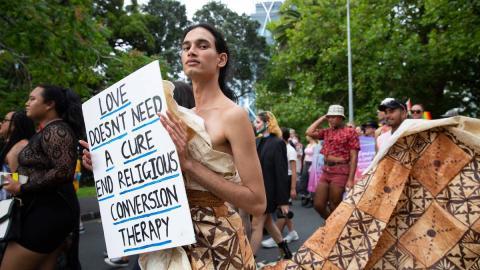
Shaneel Lal
Gender: Transgender non binary (they/them)
Sexuality: Queer
DOB: 22 January 2000
Ethnicity: Native Fijian (iTaukei and Girmitiya)
Occupation: Activist, model, columnist
Note: They also identify as Vakasalewalewa and Hijra
#Shaneel Lal#transgender#non binary#queer#2000#native#indigenous#fijian#pacific islander#asian#indian#poc#activist#model#columnist#popular#popular post#200
256 notes
·
View notes
Text
How Māori and Pacific sports stars are helping revitalize vulnerable languages!
(Interested in indigenous language revitalization? You’re in the right place! Hit Follow for more!)
176 notes
·
View notes
Text
Blow their shit up and make them famous! Samoan metal band called Shepherds Reign!
#pasifika#polynesian#tongan#fijian#Māori#hawaiian#asian and pacific islander#pacific islander#music#heavy metal
156 notes
·
View notes
Text


Indigenous textiles from the Maguindao tribe, Philippines.
#Maguindanao#Bangsamoro#Philippines#Filipinas#Filipino#Muslim#Pacific islander#Textile#Folk fashion#Fashion#Traditional dress
42 notes
·
View notes
Text



😌 | 01.23.24
#guam#jen bunny#selfie#jennifer#me#self love#island girl#self care#girls who smoke#island girls#girls who smoke weed#long hair#messy hair#messy hair dont care#long hair dont care#Guam girls#Pacific Islander#cannabis cutie#stoner#stoner girls#fun with filters
41 notes
·
View notes
Text
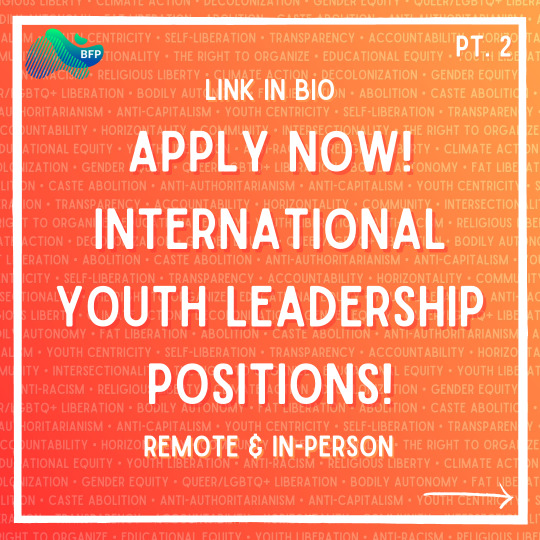

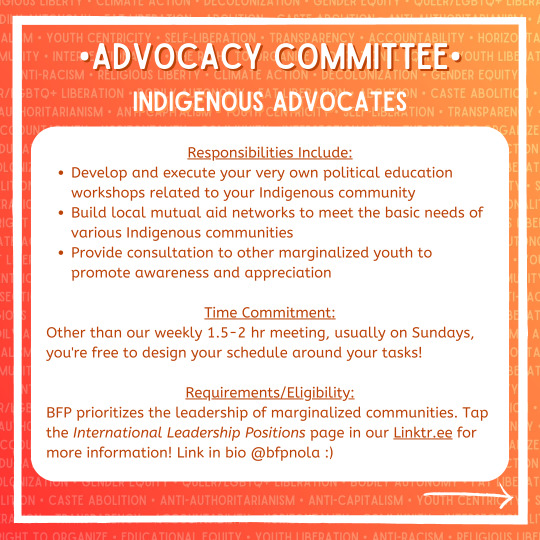
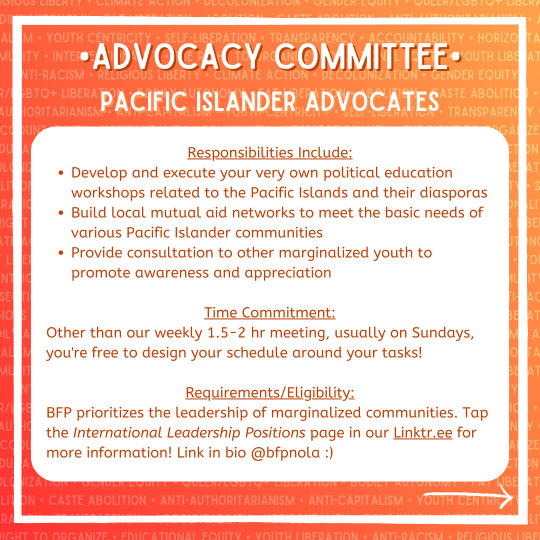


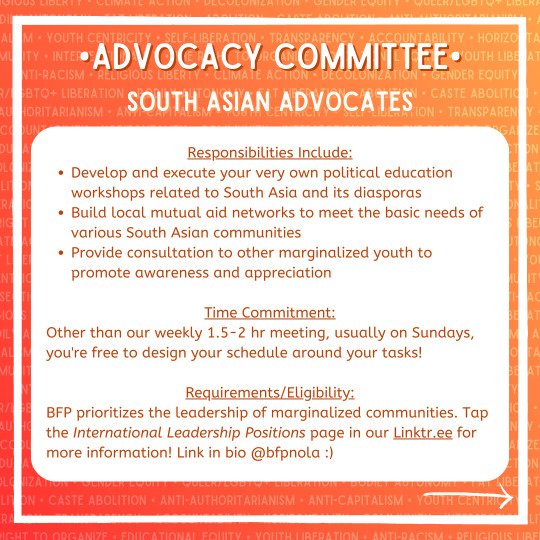


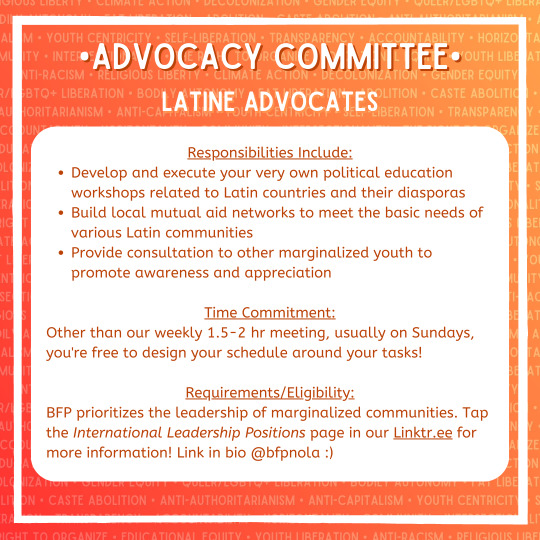
Hey! We're back with part 2! Better Future Program (@bfpnola) is officially looking for youth volunteers between the ages of 14 and 25 for our Advocacy Committee. Don't see a role that fits your identity or beliefs? Don't worry! We've got SO MANY opportunities, we had to split them up across multiple posts! Feel free to check our Linktr.ee for more positions or our "Apply Now!" highlight on Instagram in the coming weeks!
And if you don’t know who we are? Welcome! BFP is Black-, queer-, and woman-owned nonprofit, entirely run by youth! Since 2016, we’ve been accepting volunteers not just from Bulbancha (so-called New Orleans, Louisiana), but WORLDWIDE! Our mission is to globally expand peer-led political education, support, and imagination for marginalized youth!
To fulfill this goal, we offer over 3,000 free resources through our Liberation Library, design and execute mutual aid-based projects, and offer the safe space young activists need to ask questions and grow. If this sounds like something you’d be interested in, check out our International Youth Leadership Positions page in our bio!
Image description below.
[ID: All slides share the same background. There is a repeating list of BFP’s guiding principles and core beliefs in translucent, all-white, capitalized letters. BFP’s guiding principles include youth-centricity, self-liberation, transparency, accountability, horizontality, community, and intersectionality. BFP’s core beliefs include the right to organize, educational equity, youth liberation, anti-racism, religious liberty, disability justice, climate action, decolonization, gender equity, queer/LGBTQ+ liberation, bodily autonomy, fat liberation, abolition, caste abolition, anti-authoritarianism, and anti-capitalism. A burnt orange to amber gradient overlays this list. A bold, white square frames the image with a white arrow pointing right in the bottom right corner.
Slide 1 reads: “LINK IN BIO. APPLY NOW! INTERNATIONAL YOUTH LEADERSHIP POSITIONS! REMOTE & IN-PERSON.” There is a BFP logo in the lefthand corner and the words “Part Two” in the righthand corner, as this is the first of multiple posts showcasing open leadership positions.
Slide 2 reads: "Advocacy Committee: Africana Advocates
Responsibilities Include:
Develop and execute your very own political education workshops related to African countries and their diasporas
Build local mutual aid networks to meet the basic needs of those of African descent
Provide consultation to other marginalized youth to promote awareness and appreciation
Time Commitment:
Other than our weekly 1.5-2 hr meeting, usually on Sundays, you're free to design your schedule around your tasks!
Requirements/Eligibility:
BFP prioritizes the leadership of marginalized communities. Tap the International Leadership Positions page in our Linktr.ee for more information! Link in bio @bfpnola :)"
Slide 3 reads: "Advocacy Committee: Indigenous Advocates
Responsibilities Include:
Develop and execute your very own political education workshops related to your Indigenous community
Build local mutual aid networks to meet the basic needs of various Indigenous communities
Provide consultation to other marginalized youth to promote awareness and appreciation
Time Commitment:
Other than our weekly 1.5-2 hr meeting, usually on Sundays, you're free to design your schedule around your tasks!
Requirements/Eligibility:
BFP prioritizes the leadership of marginalized communities. Tap the International Leadership Positions page in our Linktr.ee for more information! Link in bio @bfpnola :)"
Slide 4 reads: "Advocacy Committee: Pacific Islander Advocates
Responsibilities Include:
Develop and execute your very own political education workshops related to the Pacific Islands and their diasporas
Build local mutual aid networks to meet the basic needs of various Pacific Islander communities
Provide consultation to other marginalized youth to promote awareness and appreciation
Time Commitment:
Other than our weekly 1.5-2 hr meeting, usually on Sundays, you're free to design your schedule around your tasks!
Requirements/Eligibility:
BFP prioritizes the leadership of marginalized communities. Tap the International Leadership Positions page in our Linktr.ee for more information! Link in bio @bfpnola :)"
Slide 5 reads: "Advocacy Committee: Central Asian Advocates
Responsibilities Include:
Develop and execute your very own political education workshops related to Central Asia and its diasporas
Build local mutual aid networks to meet the basic needs of various Central Asian communities
Provide consultation to other marginalized youth to promote awareness and appreciation
Time Commitment:
Other than our weekly 1.5-2 hr meeting, usually on Sundays, you're free to design your schedule around your tasks!
Requirements/Eligibility:
BFP prioritizes the leadership of marginalized communities. Tap the International Leadership Positions page in our Linktr.ee for more information! Link in bio @bfpnola :)"
Slide 6 reads: "Advocacy Committee: East Asian Advocates
Responsibilities Include:
Develop and execute your very own political education workshops related to East Asia and its diasporas
Build local mutual aid networks to meet the basic needs of various East Asian communities
Provide consultation to other marginalized youth to promote awareness and appreciation
Time Commitment:
Other than our weekly 1.5-2 hr meeting, usually on Sundays, you're free to design your schedule around your tasks!
Requirements/Eligibility:
BFP prioritizes the leadership of marginalized communities. Tap the International Leadership Positions page in our Linktr.ee for more information! Link in bio @bfpnola :)"
Slide 7 reads: "Advocacy Committee: South Asian Advocates
Responsibilities Include:
Develop and execute your very own political education workshops related to South Asia and its diasporas
Build local mutual aid networks to meet the basic needs of various South Asian communities
Provide consultation to other marginalized youth to promote awareness and appreciation
Time Commitment:
Other than our weekly 1.5-2 hr meeting, usually on Sundays, you're free to design your schedule around your tasks!
Requirements/Eligibility:
BFP prioritizes the leadership of marginalized communities. Tap the International Leadership Positions page in our Linktr.ee for more information! Link in bio @bfpnola :)"
Slide 8 reads: "Advocacy Committee: Southeast Asian Advocates
Responsibilities Include:
Develop and execute your very own political education workshops related to Southeast Asia and its diasporas
Build local mutual aid networks to meet the basic needs of various Southeast Asian communities
Provide consultation to other marginalized youth to promote awareness and appreciation
Time Commitment:
Other than our weekly 1.5-2 hr meeting, usually on Sundays, you're free to design your schedule around your tasks!
Requirements/Eligibility:
BFP prioritizes the leadership of marginalized communities. Tap the International Leadership Positions page in our Linktr.ee for more information! Link in bio @bfpnola :)"
Slide 9 reads: "Advocacy Committee: West Asian Advocates
Responsibilities Include:
Develop and execute your very own political education workshops related to West Asia and its diasporas
Build local mutual aid networks to meet the basic needs of various West Asian communities
Provide consultation to other marginalized youth to promote awareness and appreciation
Time Commitment:
Other than our weekly 1.5-2 hr meeting, usually on Sundays, you're free to design your schedule around your tasks!
Requirements/Eligibility:
BFP prioritizes the leadership of marginalized communities. Tap the International Leadership Positions page in our Linktr.ee for more information! Link in bio @bfpnola :)"
Slide 10 reads: "Advocacy Committee: Latine Advocates
Responsibilities Include:
Develop and execute your very own political education workshops related to Latin countries and their diasporas
Build local mutual aid networks to meet the basic needs of various Latin communities
Provide consultation to other marginalized youth to promote awareness and appreciation
Time Commitment:
Other than our weekly 1.5-2 hr meeting, usually on Sundays, you're free to design your schedule around your tasks!
Requirements/Eligibility:
BFP prioritizes the leadership of marginalized communities. Tap the International Leadership Positions page in our Linktr.ee for more information! Link in bio @bfpnola :)"
/End ID.]
#reaux speaks#hiring#volunteer#youth activism#african#african diaspora#african american#black power#indigenous#aboriginal#first nations#native american#pacific islander#central asia#west asia#south asia#southeast asia#east asia#latine#latinx#chicano#advocacy#youth#high school#middle school#university#remote#in person#hybrid#abolition
76 notes
·
View notes
Note
You know something I always think about? The na'vi's reaction to finding out about how kinda similar some of earth's culture is to theirs (e.g Africans, Native Americans/Indigenous peoples) and Maori people (especially in regards to Pukana).
Same thing in regards to braided hairstyles.
Me too!
Like imagine the Metkayina and Pacific islanders meeting eachother and bonding over their tattoos and pukana. also i’m not sure if pacific islanders have spirit animals like indigenous americans but if they do that would be super cool to bond over! like the Metkayina introducing their tulkuns, i know for a fact if it wasn’t the fact that it’s the skypeople, they’d definitely bond over their culture and love of nature.
And the omaticaya, since they’re already living with skypeople, i’m sure they have met their fair share of black kings and queens! like Max Patel. So just imagine them coming together to share similarities between African culture on Earth and the Na’vi culture from the forest. Especially with the hair braiding, sharing the significance of black hair styles and also the clothes! Mo’at’s are inspired by the indigenous tribe, so imagine how cool if someone from Earth were to recognise it!
I’m so excited to see the 3rd movie and how they incorporate the Ash tribe and i hope to see another new culture! Maybe indigenous american or asian?
Also, do you guys have anything i can learn? i’m all for sharing cultures! And i would love to get to know who you guys are!
#pls teach me i love learning#all cultures are beautiful#🫶🏼🫶🏼🫶🏼#avatar the way of water#metkayina#pacific islander#māori#haitian#african#indigenous#avatar 2009#atwow
143 notes
·
View notes
Photo
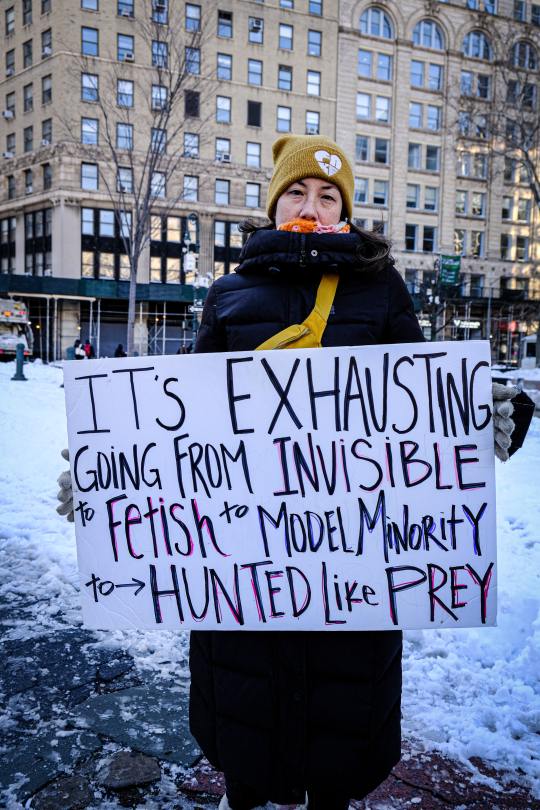
Happy Asian Pacific American Heritage Month! Find out today from the following 5 organizations how you can support the AAPI community!
➡️ 18 Million Rising (18MR)
➡️ AAPI Women Lead
➡️ Asian American Federation (AAF)
➡️ Asian Americans Advancing Justice (AAJC)
➡️ The Asian American Foundation (TAAF)
📸 by Katie Godowski on Pexels
#asian pacific american heritage month#asian#asians#asian american#asian americans#pacific islander#aapi#chinese american#korean american#filipinx#pinoy pride#asian lives matter#stop asian hate#stop aapi hate#anti asian racism#protect asian lives
89 notes
·
View notes
Text
Pretty sure I already made and posted this but...


#epithet erased banzai blasters#epithet erased flamethrower#epithet erased#ee flamethrower#me thinkz#headcanon#pacific islander#micronesia#odk just spit alling#bo did say that he was from isalnd country soooo
15 notes
·
View notes
Text
I just love that we’ve now gotten an AAPI Ariel and a Black Ariel in TLM adaptations.


#disney#the little mermaid#little mermaid#tlm#halle bailey#auli’i cravalho#black#aapi#pacific islander#tlm 2023#the little mermaid 2023#the blue eyed belle
107 notes
·
View notes
Text
"In New Zealand, Pacific Island scientists have just been given a large grant to run a study trial on the use of the traditional kava preparation and kava ceremony for treating PTSD.
Believing it could help treat PTSD and other trauma in soldiers and veterans, police officers, and corrections facility staff, the two scientists want to revise the reputation of kava, which was damaged by a pharmaceutical rush into the product some years ago.
Dr. Apo Aporosa of Fijian descent on his mother’s side, and Dr. Sione Vaka from Tonga, have received $1 million from the Health Research Council to combine kava drink with the traditional ceremony of conversation.
“I’m so stoked that Health Research Council has faith in us as a team to do this critically important work,” Dr. Aporosa told the NZ Herald. “It’s likely we’re going to spend a million dollars to prove what traditional Pacific knowledge has been trying to tell Europeans for the last 200 years.”
Kava comes in many traditional names, all relating to the root of the Piper methysticum plant. Across the islands of the Pacific, the root was stirred in water and drank for its subtle euphoric, but also sedative properties. Accompanying the drink was a Talanoa or what Dr. Aporosa is referring to as “talk therapy,” but what was essentially a heart-to-heart conversation.
Their study will take two groups of people and give them both the whole kava drink plus the talanoa, referred to as “the full package” while another group will receive just the talanoa, and another group just the kavalactones—the active ingredient in the plant.
In 2009, the Cochrane Institute confirmed that kava was probably more effective than placebo for treating anxiety. At the time, pharmaceutical and supplement companies had quickly isolated kavalactones and sold them as a natural relaxant.
Like most indigenous populations, New Zealand’s Māori population suffers from higher rates of stress, trauma, and anxiety than the national average, and the Health Research Council believes that the Kava ceremony is the most sensible way to fulfill this unmet need.
“We do know that… talk therapy works for some PTSD cases,” Dr. Aporosa said, adding that talanoa is basically talk therapy, done while sitting on the floor rather than in chairs.
“We know that kava has relaxant properties, that kava is a natural anti-anxiety medication, so we combine those two elements in a culturally influenced space, and we’ve got something here that’s unique.”
Aporosa understands the situation better than most. Not only is he from Pacific stock, but he was a police officer who had to leave the force due to PTSD from the line of duty.
His experience traveling the world speaking with former military and police got him the Fulbright Scholarship to study the kava ceremony in Hawai’i, another island culture that uses the plant.
His hope is to show that it works significantly in the trial, and then release a free e-book about how to perform the ceremony and intervention, in order to ensure the largest number of people can access the knowledge of this traditional Pacific medicine."
-via Good News Network, July 5, 2023
#kava#traditional medicine#indigenous#pacific islander#ptsd#trauma#anxiety#therapy#talk therapy#medical research#alternative medicine#new zealand#pacific islands#fiji#tonga#good news#hope#mental health
114 notes
·
View notes
Photo

Kaiit
Gender: Non binary (she/he/they)
Sexuality: Queer
DOB: 29 October 1997
Ethnicity: Papua New Guinean, Aboriginal, Torres Strait Islander
Nationality: Australian
Occupation: Singer, songwriter
#Kaiit#qpoc#lgbt#lgbtq#bipoc#non binary#queer#1997#Papua New Guinean#Aboriginal#Aboriginal Australian#native#pacific islander#biracial#poc#australian#singer#songwriter#plus size
101 notes
·
View notes
Text
Wanted to highlight two Pacific Islander properties coming up for PI part of AAPI Heritage Month!


The first is ‘Hailey’s On It!”, a new Disney Channel show starring the voice of Moana, Auli’i Cravalho.
The second is middle grade book ‘Lei and the Fire Goddess’ by own voices author Malia Maunkea.
Both come out soon and you should absolutely support them!
#pacific islander#hailey’s on it#aapi heritage month#aapi month#asian american pacific islander heritage month#hawaiian#hawaii#pacific islander books#auli’i cravalho#lei and the fire goddess#the arcadia ledger
60 notes
·
View notes
Text
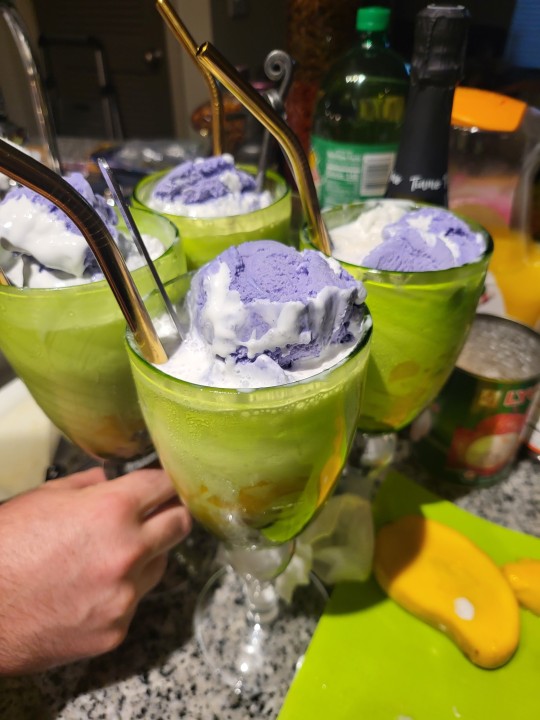
My partner @clanterns and I made some halohalo for my mom for mother's day 💕
44 notes
·
View notes